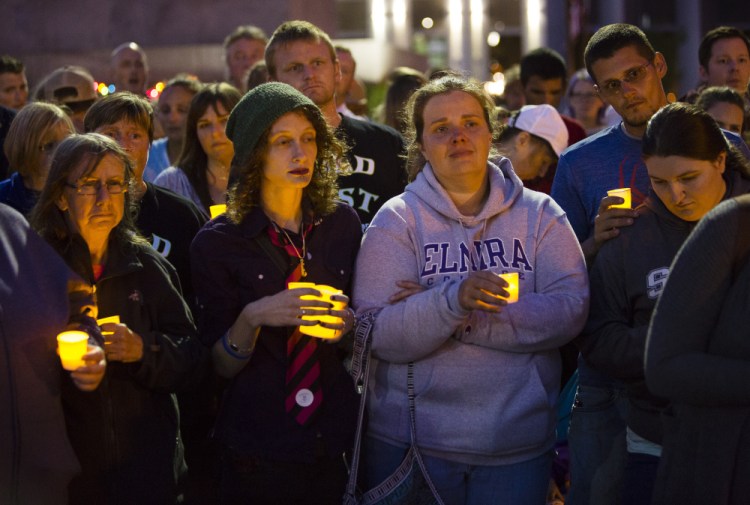When it comes to the opioid epidemic, President Trump’s words have far outstripped his actions. If that sounds familiar to Americans living in the areas most beset by economic decline, it should.
Just as with the drug crisis, Trump promised the world to people suffering from the worst effects of the changing U.S. economy, yet has delivered very little.
These two issues are not unrelated – while the specific effects are unclear, economic decline has certainly played a role in exacerbating the opioid crisis, and vice versa. In fact, to help fulfill his promises on the drug epidemic, the president could do a lot worse than following through on his pledge to reinvigorate the areas of the United States that have fallen stagnant.
DEATH RATES RISE
Of course, Trump could make the most immediate effect against the crisis by taking the advice of experts calling for increased access to medication-assisted treatment, nationwide prescription monitoring, improved interdiction on the importation of deadly synthetic opioids like fentanyl and more use of non-opioid pain management.
But the opioid epidemic is remarkably complex, and recent research suggests it has roots in the areas of the United States most left behind by globalization and automation – the areas Trump purported to care about during the campaign but has done little to help since his inauguration.
The epidemic has many causes. A change in views of pain management, pushed by pharmaceutical companies and doctors, both normalized the use of opioids and made them available where they weren’t before. The widespread use of painkillers, both medicinally and recreationally, softened the ground for an influx of cheap, addictive heroin. A weak social safety net allowed the crisis to dig in deep.
The crisis has hit Americans of all races, regions and levels of urbanization and income. But the white working class has been hit hardest of all.
From 1999 to 2014, the number of drug deaths per 100,000 white Americans grew by 203 percent. That was the major factor in the rise in midlife death rates for white working-class Americans, something almost unprecedented among developed nations. (Health indicators for minorities have historically been worse than whites, but somewhat constant. That inequity should by no means be ignored, but it’s the eye-opening change among white Americans that is relevant to the opioid epidemic.)
THE DOWNWARD CYCLE
Looking closer, one sees how chronic illness, economic hopelessness and pain medication play off each other to impede growth in many regions across the country, so much so that it is difficult to tell which factor causes the other. It’s likely each can kick off a person’s downward cycle if given the right circumstances, although a recent study found a causal link between a rise in unemployment and increases in opioid death and overdose rates.
Whatever the case, those three factors are now inextricably intertwined, and have worked together to decimate regions. In addition to increasing death rates, they have taken a chunk out of the workforce. In Maine, the number of men ages 25 to 54 not in the workforce rose from 5 percent in 1970 to 15 percent in 2015, mirroring the increase nationwide.
These are largely, though not exclusively, Americans with no college degree. In many cases, they would have in previous generations found good work at the local factory. In any case, they see decline around them and feel that they’ve missed something.
Sometimes, this feeling leads to drug use, then more problems. Other times, economic conditions lead to illness and disability, and sometimes drug addiction.
However it starts, all roads lead to bad outcomes – as one researcher put it, the decline of this population is the result of “cumulative distress, and the failure of life to turn out as expected.”
Research following last year’s election found that support for President Trump correlated with an area’s health and death rates. Places that had felt the rise in pain, illness and despair most acutely felt ignored and were gasping for help.
That help hasn’t arrived yet, and given Trump’s short history in government, we are not optimistic. But if he does decide to follow through on his promise to the struggling parts of the country, the president may just take some of the steam out of the opioid epidemic, too.
Send questions/comments to the editors.


